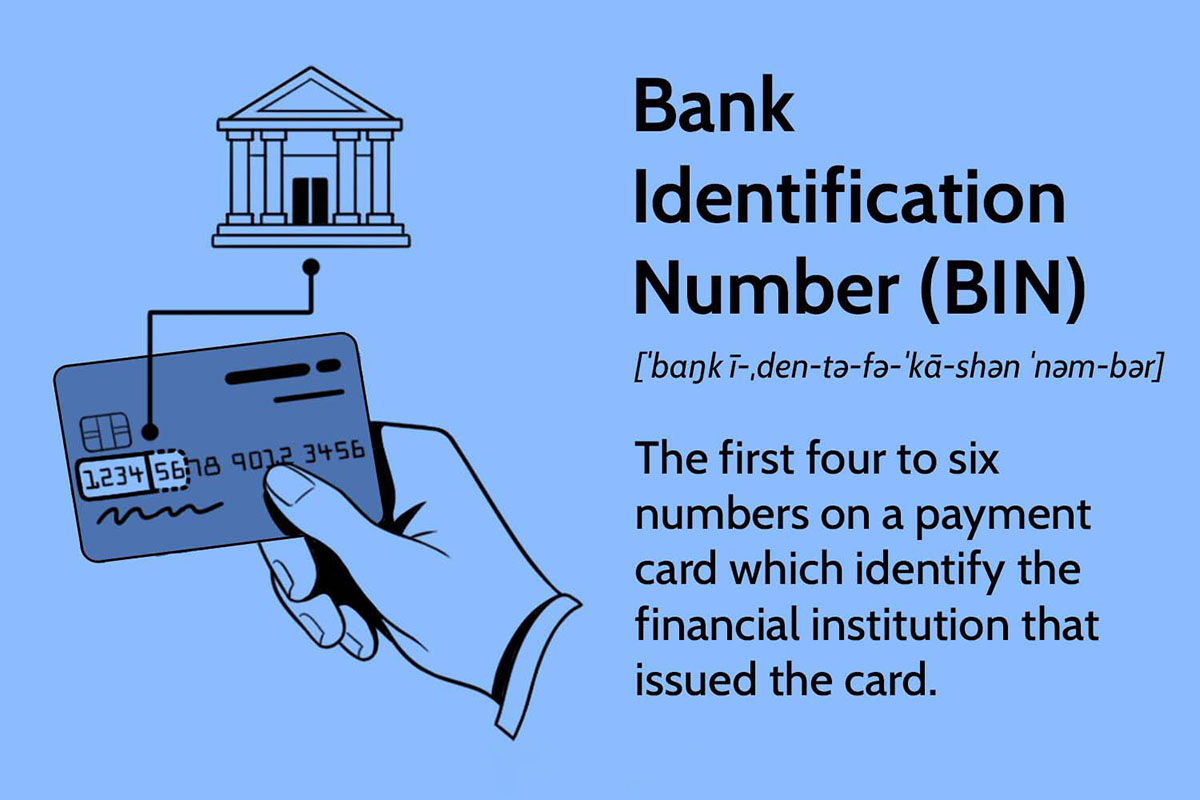

Finance
What Is A Trace Number In Banking
Published: October 12, 2023
Learn what a trace number in banking is and how it relates to finance. Understand its importance in tracking financial transactions efficiently to ensure accuracy and transparency.
(Many of the links in this article redirect to a specific reviewed product. Your purchase of these products through affiliate links helps to generate commission for LiveWell, at no extra cost. Learn more)
Table of Contents
Introduction
In the world of banking, transactions happen at lightning speed, and keeping track of all the financial activities is essential. One crucial element in the banking system is the trace number. But what exactly is a trace number and how does it impact banking transactions?
A trace number is a unique identifier assigned to each financial transaction. It serves as a reference point to trace and track the movement of funds between different accounts.
Trace numbers play a vital role in the smooth functioning of the banking system. They help ensure accuracy, transparency, and accountability in financial transactions. Additionally, trace numbers have other important functions, such as aiding in payment reconciliation and fraud detection.
In this article, we will explore the significance of trace numbers in banking, how they are generated, and their uses in various banking transactions. We will also discuss the role trace numbers play in payment reconciliation and fraud detection. Lastly, we will touch upon the importance of trace numbers in international banking.
By understanding the role and importance of trace numbers, we can gain insights into how the banking system operates and appreciate the measures put in place to ensure the security and integrity of financial transactions.
What is a Trace Number?
A trace number is a unique identifier assigned to each financial transaction in the banking system. It serves as a reference point to track and trace the movement of funds between different accounts. Think of it as a digital fingerprint that allows banks and financial institutions to easily identify and locate a specific transaction.
Trace numbers are typically generated by the bank or financial institution that initiates the transaction. They can be alphanumeric codes, often consisting of a combination of letters and numbers, to ensure uniqueness and enhance traceability.
When a transaction is initiated, whether it’s a money transfer, a payment, or a withdrawal, a trace number is generated and attached to the transaction. This trace number acts as an identifier throughout the lifecycle of the transaction, helping to link it to relevant documents and records.
In addition to facilitating transaction tracking, trace numbers also play a role in streamlining record-keeping and ensuring compliance with regulatory requirements. They provide a standardized way of organizing and referencing transactions, making it easier for banks and financial institutions to retrieve and analyze transaction data when needed.
Without trace numbers, it would be challenging to accurately and efficiently track the flow of funds between accounts. They minimize the risk of confusion or errors that can occur when dealing with high volumes of financial transactions.
Furthermore, trace numbers enable better transparency and accountability in the banking system. They make it possible to trace the origins and destinations of funds, providing a reliable audit trail for both individuals and businesses.
In the next section, we will explore the importance of trace numbers in banking and how they contribute to the smooth functioning of financial transactions.
Importance of Trace Numbers in Banking
Trace numbers play a crucial role in the banking system, ensuring accuracy, transparency, and efficiency in financial transactions. Here are some key reasons why trace numbers are of utmost importance:
- Unique Identification: Trace numbers provide a unique identifier for each transaction, allowing banks and financial institutions to distinguish and track individual transactions easily. This helps prevent confusion or errors that can occur when dealing with a large volume of transactions.
- Transaction Tracking: Trace numbers enable the tracking and tracing of funds from the point of initiation to the final destination. This allows banks to quickly locate and identify specific transactions, providing better transparency and accountability.
- Record-Keeping: Trace numbers streamline record-keeping processes by providing a standardized way of organizing and referencing transactions. This simplifies the retrieval and analysis of transaction data, making it easier for banks to comply with regulatory requirements.
- Payment Reconciliation: Trace numbers are instrumental in payment reconciliation processes. When multiple transactions occur simultaneously or in close succession, trace numbers help match incoming and outgoing funds, ensuring accurate and timely reconciliation.
- Fraud Detection: Trace numbers act as a powerful tool in fraud detection and prevention. By monitoring trace numbers, banks can quickly identify any suspicious or unauthorized transactions, enabling them to take immediate action to safeguard customer accounts and funds.
- Efficient Dispute Resolution: In the event of a dispute or discrepancy in a transaction, trace numbers provide a reference point to investigate and resolve the issue. Banks can use the trace number to review transaction details, identify any errors or inconsistencies, and take appropriate action to rectify the situation.
Without trace numbers, the banking system would face significant challenges in accurately tracking, reconciling, and addressing transaction-related issues. Trace numbers promote efficiency, accountability, and trust in the financial ecosystem, benefiting both individuals and businesses.
In the next section, we will delve into how trace numbers are generated and assigned to transactions in the banking system.
How Trace Numbers are Generated
Trace numbers are generated by the bank or financial institution that initiates a transaction. The process of generating trace numbers involves the following steps:
- Unique Identification: To ensure the uniqueness of trace numbers, banks use a combination of letters, numbers, or a combination of both. This helps differentiate one transaction from another and minimizes the chances of duplication.
- Automated Systems: Banks often rely on automated systems or software to generate trace numbers. These systems are designed to create trace numbers sequentially or using specific algorithms that guarantee uniqueness.
- Integration with Transaction Systems: Trace number generation is seamlessly integrated with the overall transaction processing system of a bank. As soon as a transaction is initiated, the system generates a trace number and incorporates it into the relevant records and documents associated with the transaction.
- Real-Time Generation: In today’s digital banking environment, trace numbers are typically generated in real-time. This means that as soon as a transaction request is received, the system generates a trace number instantly. Real-time generation ensures that trace numbers are readily available and can be used for immediate transaction tracking and monitoring.
The specific method used by banks to generate trace numbers may vary. Some banks may assign trace numbers based on predetermined patterns, such as including the date and time of the transaction, while others may use a random alphanumeric sequence.
It is important to note that trace numbers are not visible to customers during the transaction process. They are an internal mechanism used by banks to identify and track the transactions effectively.
With proper trace number generation, banks can ensure that each transaction is uniquely identified and can be easily traced throughout its lifecycle.
In the next section, we will explore the various uses of trace numbers in banking transactions.
Uses of Trace Numbers in Banking Transactions
Trace numbers serve multiple purposes in banking transactions, ensuring accuracy, accountability, and efficiency. Here are some key uses of trace numbers:
- Transaction Identification: Trace numbers act as unique identifiers for each banking transaction. They allow banks to easily distinguish and track individual transactions, making it simpler to locate and retrieve specific transaction details.
- Transaction Reconciliation: Trace numbers are essential in the process of payment reconciliation. They help match incoming and outgoing funds, allowing banks to reconcile various transactions efficiently. Trace numbers streamline the identification and verification of related transactions, reducing delays in the reconciliation process.
- Accountability and Audit Trail: Trace numbers provide a reliable audit trail in banking transactions. They allow banks to trace the origin and destination of funds, ensuring transparency and accountability. In case of any discrepancies or disputes, trace numbers help banks investigate and resolve the issues by providing a clear record of the transaction flow.
- Transaction Tracking: Trace numbers enable the tracking and monitoring of financial transactions. Banks can easily trace the movement and status of funds within their systems using the unique trace numbers. This helps ensure timely and accurate processing of transactions and provides better visibility into the overall flow of funds.
- Compliance and Regulatory Requirements: Trace numbers play a significant role in meeting regulatory requirements. They provide a standardized way to organize and reference transactions, assisting banks in meeting their compliance obligations. The use of trace numbers facilitates the retrieval and analysis of transaction data, simplifying compliance processes.
- Efficient Dispute Resolution: Trace numbers are instrumental in resolving transaction-related disputes. With trace numbers, banks can quickly locate and review the relevant transaction details, leading to fast and accurate dispute resolution. The ability to track and trace transactions using trace numbers minimizes delays and ensures a smoother resolution process.
These uses of trace numbers in banking transactions highlight their significance in ensuring smooth, accurate, and accountable financial operations. They contribute to the overall efficiency and integrity of the banking system.
In the next section, we will discuss the role of trace numbers in payment reconciliation.
Trace Numbers and Payment Reconciliation
Payment reconciliation is a critical process in banking that involves matching and balancing incoming and outgoing funds. Trace numbers play a crucial role in facilitating this process, ensuring accurate and efficient payment reconciliation.
Here’s how trace numbers aid in payment reconciliation:
1. Matching Incoming and Outgoing Funds: When multiple transactions occur simultaneously or close together, it can be challenging to identify which incoming funds correspond to specific outgoing funds. Trace numbers provide a unique identifier for each transaction, allowing banks to match and reconcile incoming and outgoing funds accurately. By comparing the trace numbers associated with each transaction, banks can quickly identify any discrepancies and resolve them swiftly.
2. Streamlining Reconciliation Processes: Trace numbers streamline the payment reconciliation process by serving as a reference point. Banks can easily locate and retrieve transaction details using trace numbers, making it more efficient to reconcile various transactions. This reduces manual effort, saves time, and minimizes errors in the payment reconciliation process.
3. Enabling Timely Reconciliation: With trace numbers, banks can reconcile transactions in a more timely manner. By associating trace numbers with each transaction, banks can track the movement of funds in real-time. This enables them to identify any discrepancies or exceptions promptly, allowing for immediate resolution and ensuring that the reconciliation process stays up to date.
4. Enhancing Accuracy and Reliability: Trace numbers provide a reliable audit trail and enhance the accuracy of payment reconciliation. By referencing trace numbers, banks can validate the flow of funds and ensure that each transaction is accounted for. This improves the overall reliability and integrity of the reconciliation process and reduces the risk of errors or omissions.
Overall, trace numbers greatly simplify the payment reconciliation process in banking. They enable banks to match incoming and outgoing funds, streamline reconciliation procedures, ensure timely reconciliation, and enhance the accuracy of the process. By leveraging trace numbers, banks can efficiently manage and balance financial transactions, contributing to the smooth functioning of the banking system.
In the next section, we will discuss the role of trace numbers in fraud detection within the banking industry.
Trace Numbers and Fraud Detection
Fraud detection is a critical aspect of banking operations, and trace numbers play a significant role in identifying and preventing fraudulent activities. By leveraging trace numbers, banks can better detect and mitigate fraudulent transactions effectively.
Here’s how trace numbers contribute to fraud detection in the banking industry:
1. Transaction Monitoring: Trace numbers enable banks to monitor transactions in real-time. By associating trace numbers with each transaction, banks can track the movement of funds and quickly identify any suspicious or unauthorized activity. The trace numbers serve as a reference point for transaction monitoring systems to flag potentially fraudulent transactions for further investigation.
2. Pattern Recognition: Banks utilize trace numbers to detect patterns or trends that may indicate fraudulent behavior. By analyzing trace numbers associated with previous fraudulent transactions, banks can develop algorithms and models to identify similar patterns in ongoing transactions. This helps in the early identification and prevention of fraudulent activities.
3. Rapid Investigation and Resolution: Trace numbers provide a clear audit trail that allows banks to investigate and resolve fraud cases efficiently. In the event of a suspected fraud, banks can trace the transaction details associated with the specific trace number, gather evidence, and take immediate action to mitigate further losses. The use of trace numbers expedites the investigation process and aids in preventing additional fraudulent transactions.
4. Collaboration with Fraud Detection Systems: Trace numbers are integrated into fraud detection systems utilized by banks. These systems leverage trace numbers to correlate transaction information with other data points, such as customer behavior, location, and transaction amount, to identify potential fraud indicators. The use of trace numbers enhances the accuracy and effectiveness of these fraud detection systems.
5. Data Analysis and Reporting: Trace numbers enable banks to perform comprehensive data analysis and reporting for fraud detection purposes. By systematically analyzing the transaction data associated with trace numbers, banks can identify trends, patterns, or anomalies that may indicate fraudulent behavior. This analysis forms the basis for developing robust fraud prevention strategies and improving overall security measures.
Overall, trace numbers serve as a powerful tool in fraud detection within the banking industry. They enable the monitoring of transactions, facilitate pattern recognition, aid in rapid investigation and resolution of fraud cases, collaborate with fraud detection systems, and support in-depth data analysis for enhanced security measures.
In the next section, we will explore the use of trace numbers in international banking transactions.
Trace Numbers in International Banking
In the realm of international banking, trace numbers play a crucial role in ensuring smooth and secure cross-border transactions. They facilitate the identification, tracking, and reconciliation of funds across different financial institutions and jurisdictions. Here’s how trace numbers are used in international banking:
1. Cross-Border Fund Tracking: Trace numbers enable the tracking of funds as they move across borders in international transactions. Each transaction is assigned a unique trace number, allowing financial institutions to monitor the flow of funds from the originating bank to the beneficiary bank. This provides transparency and visibility throughout the international payment process.
2. Efficient Transaction Reconciliation: International transactions involve multiple parties and numerous intermediaries. Trace numbers streamline the reconciliation process by linking transaction details across different financial institutions, making it easier to match incoming and outgoing funds. This enhances the efficiency of reconciliation and reduces delays in cross-border payments.
3. Compliance with International Regulations: Trace numbers are crucial for international banks to comply with various regulatory requirements. They help financial institutions keep track of funds to ensure that transactions adhere to anti-money laundering (AML) and know-your-customer (KYC) regulations. Trace numbers provide an essential reference point for auditing and reporting purposes related to international transactions.
4. Dispute Resolution in International Transactions: Trace numbers play a vital role in resolving disputes that may arise in international transactions. In case of discrepancies or issues, the trace number associated with a specific transaction serves as a reference for investigating and resolving the problem. This improves the efficiency of dispute resolution and enhances customer satisfaction in international banking.
5. Compliance with SWIFT Standards: The Society for Worldwide Interbank Financial Telecommunication (SWIFT) is the global communication network used by banks to conduct international transactions. Trace numbers are an integral part of the SWIFT system, allowing for standardized messaging and seamless interoperability among financial institutions worldwide. The use of trace numbers ensures consistency and conformity with SWIFT standards in cross-border transactions.
Trace numbers are a fundamental component of international banking, facilitating the smooth and secure movement of funds across borders. They enable cross-border fund tracking, enhance transaction reconciliation, ensure compliance with international regulations, aid in dispute resolution, and support adherence to SWIFT standards.
To conclude, trace numbers are instrumental in simplifying and ensuring the reliability of international banking transactions, promoting transparency and efficiency in the global financial system.
If you have any questions or need further clarifications, please feel free to ask.
Conclusion
Trace numbers are a critical component of banking transactions, providing a unique identifier for each financial transaction. They play an instrumental role in ensuring accuracy, transparency, and efficiency in the banking system.
In this article, we explored the concept of trace numbers and their significance in banking. We learned that trace numbers serve as reference points to track and trace the movement of funds between accounts. They streamline record-keeping processes, aid in payment reconciliation, and enhance accountability and audit trails in financial transactions.
Trace numbers are generated by banks using automated systems, ensuring their uniqueness and facilitating real-time transaction tracking. They are vital in streamlining payment reconciliation processes, allowing for accurate matching of incoming and outgoing funds, and efficient dispute resolution.
Furthermore, trace numbers contribute to fraud detection and prevention efforts in the banking industry. They enable transaction monitoring, pattern recognition, and efficient investigation and resolution of fraudulent activities.
In international banking, trace numbers play a crucial role in cross-border transactions. They facilitate cross-border fund tracking, support efficient transaction reconciliation, ensure compliance with international regulations, and aid in dispute resolution.
Overall, trace numbers are essential for the smooth functioning, security, and integrity of the banking system. They enable accurate transaction tracking, promote transparency, improve payment reconciliation, support fraud detection efforts, and facilitate seamless international transactions.
Understanding the role and importance of trace numbers provides valuable insights into the mechanisms that underpin the banking industry. By leveraging trace numbers effectively, banks can enhance their operational efficiency, ensure compliance with regulatory requirements, and provide a secure and reliable financial ecosystem for individuals and businesses alike.
If you have any further questions or need more information, please feel free to ask.














